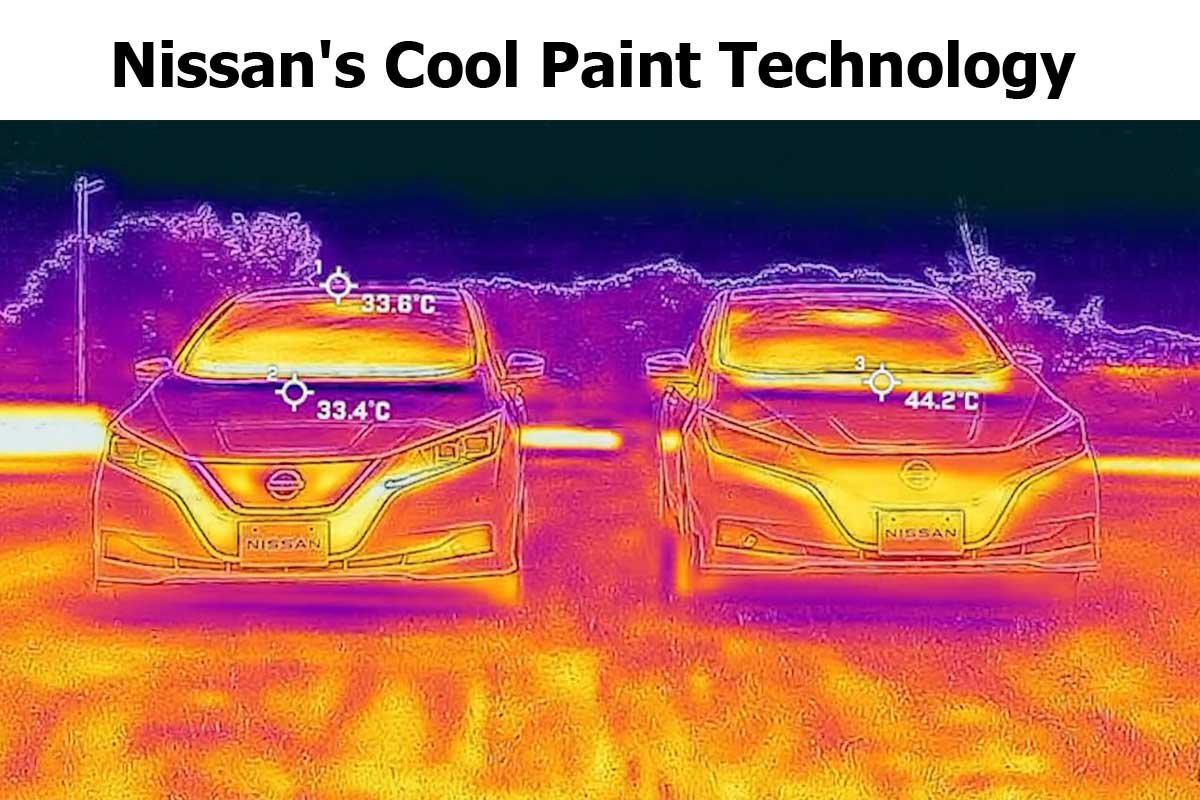Nissan is pioneering an innovative “cool paint” technology designed to combat rising temperatures and enhance vehicle efficiency. This cutting-edge paint aims to reduce vehicles’ exterior and interior temperatures, offering a more comfortable driving experience while promoting energy conservation.
The Technology Behind Nissan’s Cool Paint
Developed in collaboration with Radi-Cool, a specialist in radiative cooling products, Nissan’s cool paint incorporates metamaterials—engineered composites with properties not typically found in nature. These metamaterials are embedded with two types of microstructure particles:
- Near-Infrared Reflective Particles: These particles reflect near-infrared rays from sunlight, primarily responsible for heating surfaces.
- Electromagnetic Wave Generators: These particles generate electromagnetic waves that counteract the sun’s rays, effectively redirecting solar energy away from the vehicle and into the atmosphere.
This dual-action mechanism significantly reduces the amount of heat absorbed by the vehicle’s surfaces, such as the roof and hood, leading to a cooler interior environment.
Real-World Testing and Results
A feasibility trial test was commenced for 12 months at the Tokyo International Airport, the cool paint was applied to a Nissan NV100 service vehicle in November 2023. The airport’s expansive, unshaded tarmac provided an ideal environment to evaluate the paint’s performance under high-temperature conditions.
Initial results from the trial have been promising:
- Exterior Surface Temperature Reduction: Vehicles treated with the cool paint exhibited up to a 12°C (22°F) decrease in exterior surface temperatures compared to those with conventional paint.
- Interior Cabin Temperature Reduction: The interior temperatures of these vehicles were up to 5°C (9°F) cooler, enhancing passenger comfort and reducing reliance on air conditioning systems.
These temperature reductions are particularly significant for vehicles parked under direct sunlight for extended periods, as they can lead to decreased energy consumption and improved overall efficiency.
Challenges and Future ProspectsWhile the cool paint technology offers substantial benefits, it also presents certain challenges:
- Paint Thickness: The cool paint is approximately six times thicker than standard automotive paints, which can complicate the application process and may affect the vehicle’s appearance.
- Application Method: Traditional application methods, such as rolling, are not ideal for this paint. To ensure uniformity and aesthetics, Nissan is exploring spray application techniques.
- Topcoat Development: To protect the paint and maintain a glossy appearance, Nissan is working on developing a clear topcoat that can resist environmental factors like salt, scratches, and chemical reactions.
Despite these challenges, Nissan is committed to refining the cool paint technology. The company aims to make the paint thinner without compromising its cooling effectiveness and to offer it in various colours for broader consumer appeal.
Environmental and Economic Implications
The adoption of cool paint technology aligns with global efforts to combat climate change and reduce energy consumption. By lowering the interior temperatures of vehicles, the need for air conditioning is diminished, leading to:
- Reduced Fuel Consumption: Less reliance on air conditioning systems can lead to significant fuel savings, especially in regions with hot climates.
- Extended Battery Life: For electric vehicles, decreased air conditioning usage translates to less strain on the battery, potentially extending its lifespan and driving range.
- Enhanced Passenger Comfort: A cooler cabin environment improves the overall driving experience, particularly during hot weather conditions.
Nissan’s cool paint technology represents a significant step toward more sustainable and energy-efficient transportation solutions. As the company continues to refine and test this innovation, it holds the potential to become a standard feature in future vehicle models, contributing to a greener automotive industry.


